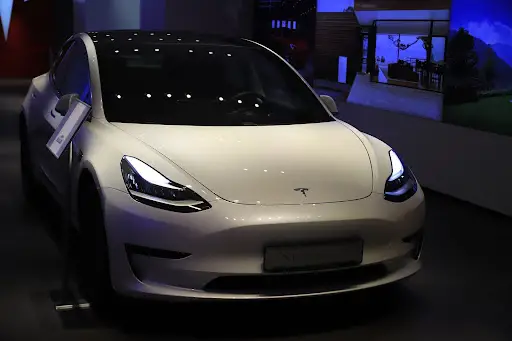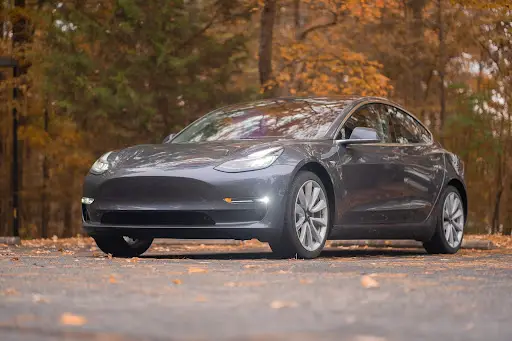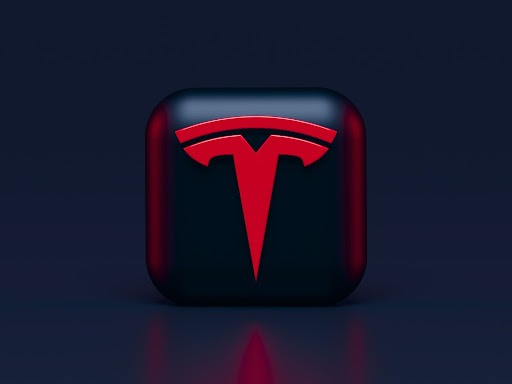Tesla Lifespan: How Many Miles Will It Last?
If you want to judge the longevity of a Tesla, the battery is the main criteria to consider. With all the old parts like the combustion engine or transmission system gone and replaced with modern electrical components, there isn’t much else to look at.�?
The average lifespan of a Tesla battery is 300,000-500,000 miles. The vehicle can last a bit more or less depending on a few factors such as car model, charging habits, and temperatures. In contrast, an average internal combustion engine is estimated to have about ten years or 200,000 miles of life before needing replacement.�?
To compare how the Tesla EV batteries operate, we have to look a little more in detail at the different models. Keep reading for a deep dive.�?
The Battery Longevity of Different Tesla Models
Let’s consider the various Tesla models and how they may differ in terms of battery life.�?
Model S and Model X
Model S and X are nearly identical as far as system design goes. The battery is essentially the same, so are the numbers.�?
The battery in a Model S has a range of 400 miles per cycle with a prediction to go about 1000 cycles, which makes 400,000 miles under ideal circumstances. In normal life, you can expect it to last at least 300,000 miles. Moreover, the battery warranty stands for eight years or 150,000 miles, whichever comes first. These numbers are quite impressive!�?
If we take the industrial average mileage of 13,500 miles per year, the 300,000 to 400,000 miles will take about 22 to 30 years to reach.
According to a study from iSeeCars, about 2.5% of the Model S Teslas sold in 2019 went well above 200,000 miles. Data gathered from Tesloop, a tesla-only shuttle taxi service in Southern California, shows a Model S reaching 400,000 miles.�?
They also reported another model S reaching 300,000 miles in the short span of 2 years. A typical Internal Combustion Engine car would be considered scrap by its 200,000 mileage.�?
Model X
Since Model S and X are similar, you can expect the same 200,000 to 400,000 miles over 20 to 30 years.�?
With that out of the way, let’s talk about battery degradation.
Tesla’s data shows a 10%-15% degradation over 200,000 miles. Assuming the average driver goes up to 13,500 miles a year, that makes about 13% degradation over almost 15 years in ideal conditions.�?
The li-ion traction batteries used to power EV cars are operable when their State of Charge –or SoC– is higher than 70% –or with less than 30% degradation.�?
Model 3
As an oversimplification, you can say that the Model 3 is just a bigger version of Model S and X.
Although there isn’t much data about Model 3, we know it’s designed to have a lifespan of 300,000 to 500,000 miles, or 1500 charges, which is higher than the two previous models.�?
Now, this is again considering the yearly industrial average of 13,500 miles per year, which can lead to a 20-40 year lifespan under ideal circumstances.�?
Based on the limited data that we have, Model 3 degrades about 5% in the first 100,000 miles, but the curve becomes less steep further on, which means about 20% degradation over 10 to 25 years. We can calculate the life expectancy to 300,000 to 500,000 miles over�? 20 – 40 years, even in not-so-ideal circumstances.
Model Y
Unlike the other models, Model Y is an SUV, which instantly became popular when it was released in 2020.�?
Model Y is very similar to Model 3. Besides the battery, they share other components such as the chassis and driver units. Like other Teslas, 300,000 to 500,000 is the estimated lifespan of Model Y, and the battery lasts 1500 cycles with minimal degradation.�?
Suppose you estimate the range of model Y’s Long-Range and Performance models, which is about 320 miles. In that case, it’s not unreasonable to expect your battery to go 450k miles and still have 80% of battery life left.

Tesla Battery Degradation�?
Battery degradation shows the loss in capacity and mileage. According to Tesla’s 2019 impact report, there’s a 10 to 15% battery degradation between 150,000 and 200,000 miles. However, based on the 2020 impact report, Tesla’s batteries should have less than 10% degradation over 200,000 miles.
That is pretty useful for a lifespan, especially considering that a regular car with 200,000 mileage is considered scrap in the US. In Europe, that number is even lower—150,000 miles.�?
On average, Models S and X maintain about 88% of their capacity over 150,000 to 200,000 miles.�?
In general, Tesla batteries tend to lose around 15% of their capacity in the first 150,000 miles but stabilize after that.�?
Tesla Battery Warranty Coverage�?
Tesla used to have an 80%-unlimited mileage warranty, but the company changed it to something more standard. The warranties can be quite different among models, so let’s consider each one.�?
The new warranty for Teslas is the New Vehicle Limited Warranty, a package of three warranty ranges:
- Basic Vehicle Limited Warranty
- Supplemental Restraint System Limited Warranty
- Battery and Drive Unit Limited Warranty
They can be pretty similar, with a few differences among models.
Model S
The current warranty for model s is the New Vehicle Limited Warranty. It’s a package of three warranty ranges: Basic Vehicle Limited Warranty, Supplemental Restraint System Limited Warranty, and the popular Battery and Drive Unit Limited Warranty.
Basic vehicle limited warranty for Model S covers the cost of materials, repairs, and labor on defects for four years or 50,000 miles, provided that the problems are caused under “normal use.”
This “normal use” means if your Tesla parts fail under reckless off-roading or heavy not-recommended-towing, tesla won’t feel responsible enough to cover your costs.
The Supplemental Restraint System Limited Warranty covers the costs of materials and repair of the original airbag and seatbelt system. If made and installed by Tesla on your Model S, the warranty will cover it up to 5 years or 60,000 miles.�?
The Battery and Drive Unit Warranty of the Model S is more generous than the previous two. It covers eight years or 150,000 miles, whichever comes first.�?
The battery should have a minimum battery capacity retention of 70% for Tesla to cover the material, repair, and labor costs.
Model X
Tesla’s Model X, along with its iconic falcon wings, comes with their New Vehicle Limited Warranty. It includes Tesla’s Basic Vehicle Limited Warranty, their Safety Restraint System Limited Warranty, and their Battery and Drive Unit Limited Warranty.
The basic vehicle limited warranty of 4 years and 50,000 miles covers the cost of essential repairs from the parts to the labor. That excludes wear and tear items like the windshields and brake pads.
Because of the falcon-wing doors of this model, there might be some troublesome repairs needed. The basic vehicle limited warranty provides a good enough guarantee for that. It is best to keep this warranty updated as much as possible.
The Safety Restraint System (SRS) Limited Warranty, for five years or 60,000 miles, covers all parts of the airbag and seatbelt system manufactured and installed by Tesla.
Model X’s Battery and Drive Unit Limited Warranty covers the battery and drivetrain for eight years or 150,000 miles. It covers manufacturing defects, battery capacity maintenance of less than 70%, and battery damage caused by fire.�?
Model 3
Model 3 has the new vehicle limited warranty package that goes into action from the delivery day. It includes Tesla’s Basic Vehicle Limited Warranty, their Safety Restraint System Limited Warranty, and their Battery and Drive Unit Limited Warranty. the battery warranty does vary on the model 3 trim level
The Basic Vehicle Limited Warranty is for four years and 50,000 miles. It covers cosmetic problems or manufacturing defects like paint chipping or failing some parts under regular use. That doesn’t include wear and tear items like tires or windshields.
The Safety Restraint System Warranty lasts for six years or 60,000 miles. This warranty covers the airbag and seatbelt originally installed by Tesla.
Since Model 3 has three trim types, it includes two different battery warranties: The Battery And Drive Unit Warranty of the Model 3 standard range are valid for eight years or 100,000 miles, whichever comes first.�?
Model Y
Like the other models, Model Y falls under the New Vehicle Limited Warranty; it includes a Basic Vehicle Limited Warranty, a Safety Restraint System Limited Warranty, and a Battery and Drive Unit Limited Warranty in one package.�?
The Basic Vehicle Limited Warranty covers the repair costs of parts manufactured by Tesla for four years or 50,000 miles. Things like the control panel tablet or the side mirrors. Wear and tear items like the seat covers or wiper blades aren’t included.
The Safety System Limited Warranty is for five years or 60,000 miles. The costs of repairing and replacing the safety system like airbags and seat belts are covered as long as it falls under tesla conditions.
The Model Y long-range and performance battery warranty covers the repair and recovery of the battery pack and components with a minimum battery retention capacity of 70% for 120,000 miles or eight years.

How To Increase Your Tesla’s Lifespan
Now, we mentioned “ideal circumstances” a lot and how they impact the lifespan of your Tesla. Let’s see what they are and some tips on the most useful ones to keep in mind.
Improve Your Charging Habits
EVs use li-ion batteries, which means they work with chemical, electric energy, as opposed to internal combustion engines that work with explosive power.�?
These chemically-engaged batteries degrade quite quickly if not charged correctly; not to be confused with completely, which brings us to our first tip:
Don’t Charge Your Battery to 100%
It’s usually recommended not to fully charge any battery and plug the device out at 80%. Fully charging the battery shortens its lifespan significantly. It creates unnecessary chemical reactions that lead to gasses forming inside the batter.�?
That results in excess mechanical stress and degradation of the battery.
If you charge it to 100% or more than 80%, make sure to use the battery and not keep it full for a long time.�?
Not fully charging your battery also opens an extra option called regenerative braking. This feature is automatically deactivated when your battery goes over 80% charge (more on that later).�?
Don’t Let Your Battery Reach or Stay at 0%
Having your battery at 0% messes with the chemicals in another way and wears out your battery. When your battery goes below 20% or 10%, plug it in, so it doesn’t stay empty for a long time.
Don’t Supercharge, At Least Not Too Often
Fast charge and supercharge stress out your battery’s mechanical components. Having such a rapid surge of energy pass through any electrical system will wear it out over time, so be a little more patient with your charging.
Be Careful of Weather Changes
Other than speed charging and draining the battery, heat plays an even more significant part in the degradation.�?
Extreme weather and temperature changes can wear out your car. So be careful where you park, store, or charge your EV, even if where you drive doesn’t have ideal conditions.
High temperature is one of the main factors that degrade the battery. Other than that, direct sun and temperatures into the 90°F (32°C) range can cause several problems. That can be melting the separator, dissolving cathode metals, or even decomposing the electrolytes in the battery.�?
If you have to put your car somewhere in the summer heat, make sure to at least leave it in the shade to minimize damage.
Garages can get quite hot, too, if you’re not careful. It’s best to have some fan or cooling system to preserve a comfortable temperature.
Use Regenerative Braking
Regenerative braking is a way to use some of the wasted energy while the car stops or is slowing down.�?
Let me explain.
Imagine a 3000-pound car traveling at 100 mph. What happens if it needs to stop?
To make the car stop, you need to apply the same amount of force in the opposite direction to cancel out the propelling force and make the car stop.
This “canceled energy” is wasted. The car uses 0.25 kWh to move, and the brake uses the same 0.25 kWh to make it stop. That’s 0.5 kWh wasted. That much energy can drive the car about 1.25 km.
What regenerative braking does in an electric car is to capture some of that energy in the battery. It’s like those cheap car toys. You roll the wheels in the opposite direction, and when you let it go, it uses the energy to move.�?
Regenerative braking is only available in EV cars. This simple system can save from 30 up to 70% of the energy otherwise wasted.
You might think that it isn’t a lot. Still, with urban traffic making cars stop every 20 seconds, it quickly adds up.
Conclusion
While the invincibility of the one-million-mile Tesla cars and the outlasting batteries might be somewhat of a bluff, it isn’t that far from the truth. They were certainly designed with that goal in mind and weren’t that far off in delivering.�?
Tesla cars are for sure long-lasting cars with robust batteries that will most likely outlive the vehicle itself. The approximate life of the batteries is somewhere between 300,000 and 500,000 miles. The life of the car itself has yet to be explored in the future but shows to be promising.�?
Amazon and the Amazon logo are trademarks of Amazon.com, Inc, or its affiliates.







